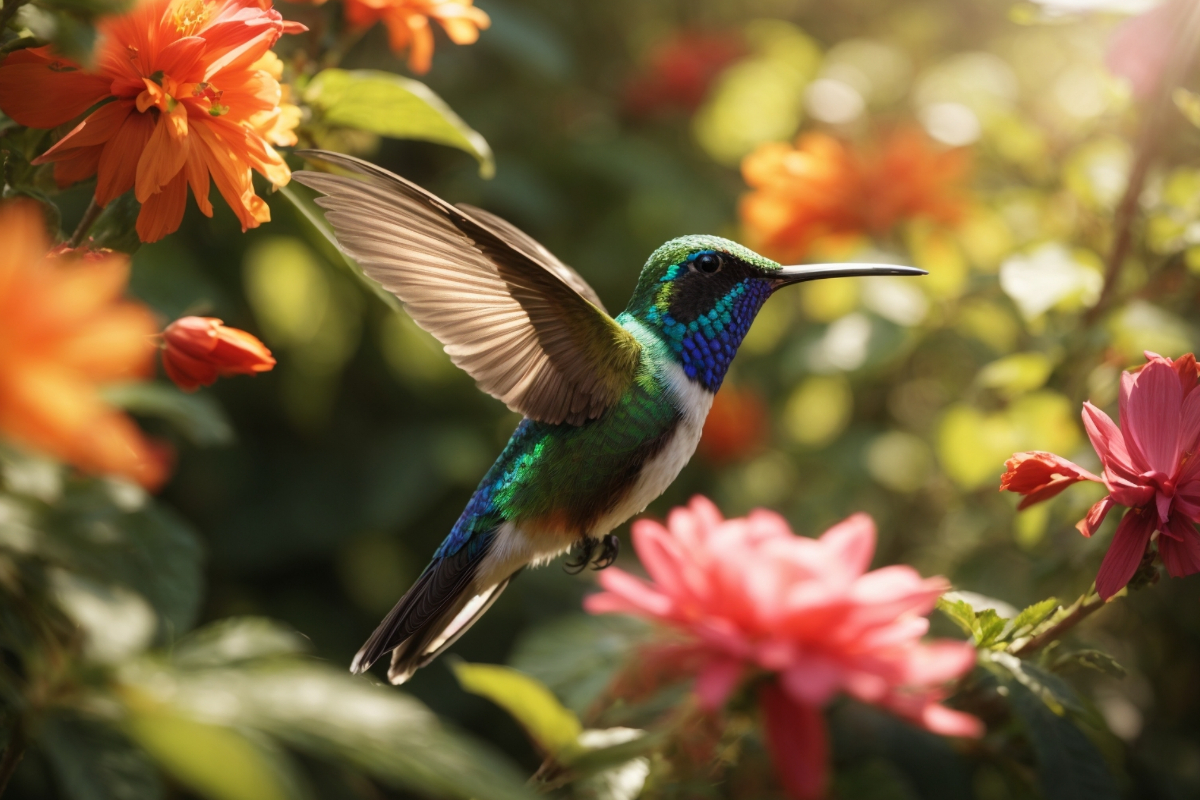Hummingbirds are known for their rapid and agile flight as they move from one flower to another, using their slender beaks to extract nectar. This unique flight style serves a crucial purpose – it allows them to efficiently feed on nectar and power their impressive aerial abilities.
In this blog post, we will explore the ways in which darting between flowers aids hummingbirds in their search for food. From expanding their access to food sources to conserving energy, we will discover why their characteristic movement pattern is essential for their survival.
Zipping Between Blossoms Boosts Nectar Intake
Hummingbirds require a significant amount of energy to sustain their small bodies, consuming more than half their weight in nectar daily. Darting flight enables them to access nectar from multiple flowers that are widely spaced apart. This maximizes the amount of sugary fuel they can extract compared to solely relying on one patch of blooms.
Sampling Far and Wide
By swiftly moving between different clusters of flowers, hummingbirds can take advantage of newly opened blossoms that are full of untouched nectar. It’s like having insider knowledge on where to find the best all-you-can-eat nectar buffets! This is particularly beneficial for migrating hummingbirds that need to quickly locate reliable food sources.
Minimizing Competition
Darting flight also helps hummingbirds reduce competition with other nectar feeders. For example, if a bee has claimed a promising patch of flowers, a hummingbird can simply move on to the next floral hotspot instead of wasting energy fighting for access. This ensures a steady supply of nectar.
Precise Maneuvering Improves Hummingbird’s Feeding Efficiency
Hummingbirds combine their darting flight with exceptional hovering stability while feeding, allowing them to efficiently extract nectar from each blossom.
Total Control
Hummingbirds have the ability to maneuver in any direction during flight, including backwards and upside down. This enables them to position themselves perfectly at each flower for easy access to nectar. In comparison, other birds like chickadees have to repeatedly land and take off to reach different angles on a branch. Darting and hovering save hummingbirds calories that they can instead obtain from nectar.
Built-in Nectar Extraction Tools
Specialized features such as forked tongues and beak shapes complement darting flight by improving nectar uptake. This seamless transition between darting to flowers and hovering to feed maximizes their anatomy for optimal foraging efficiency.
Darting Flight Evolved to Aid Feeding
Scientists believe that hummingbirds’ distinctive flight styles and related adaptations evolved to enhance their access to nectar. The first hummingbirds appeared in South America, where there was an abundance of flowering plants providing a reliable food source. Natural selection favored better hoverers and darting flight to tap into this abundance. Over time, anatomical traits like wing articulation and tongue grooves developed to further enhance aerial maneuverability and nectar extraction. Darting flight likely conferred a survival advantage by enabling more efficient foraging, leading to the evolution of supporting adaptations that facilitate hummingbirds’ unparalleled feeding strategy.
Fueling Aerial Mastery
With one of the highest metabolisms and energy needs in the animal kingdom, hummingbirds rely on darting flight to maximize their nectar consumption. By rapidly moving between flowers and hovering precisely to feed, they can access essential fuel stores. This powers their famous hovering feats, courtship dances, migration marathons, and gravity-defying escapes.
Final Thought
The next time you observe a hummingbird effortlessly transitioning between darting flight and mid-air dining, remember that it is this synergy that enables their extraordinary lifestyle. We hope you found this article valuable, and if you did, we would appreciate it if you could share it with others. Your support means a lot to us. Happy bird-watching!
